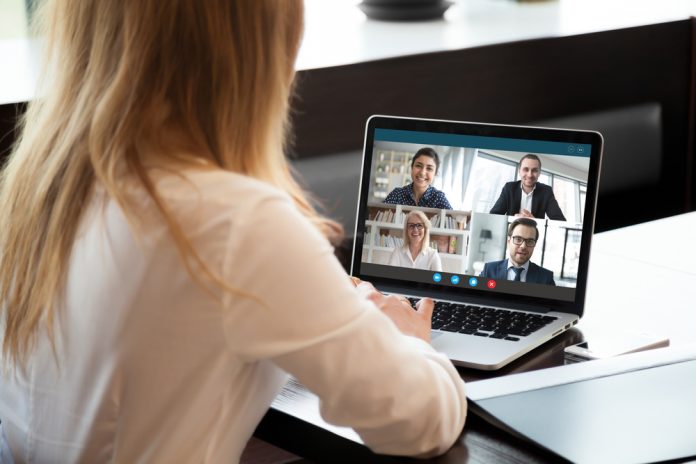
We’ve all been there; live virtual training sessions that satisfy no one. Participants who turn on, tune off and drop out of experiences that resemble lecture-style webinars with a few random breakouts. Facilitators who feel they’ve lost their mojo because they can’t read the room struggle with getting the tech to work. Many of us, understandably, yearn for the good old days of in-person learning.
Nostalgia, however, obscures both the shortcomings of in-person training and the opportunities that virtual environments offer. Let’s face it: in-person can be expensive, participants are just as distracted, and crammed multi-hour (or day) sessions fail to deliver the on-the-job application. Meanwhile, innovative approaches to virtual facilitation have increased flexibility and access for employees who might otherwise have been excluded, and learning outcomes have improved when long sessions are broken down into spaced learning experiences.
Achieving the benefits of live virtual learning requires more than technical fluency. It requires a fundamental rethinking of what effective facilitation looks like. Here are three mindset shifts that can be incorporated into the design and delivery of effective facilitator-led training online.
Move from “sage on the stage” to “guide on the side.”
Yes, the facilitator is still responsible for creating connections between the content of the session and the audience. But the role of the facilitator in the new model is less about the performative aspects of commanding the room at the moment and more about outcomes – what people take back and apply to their jobs.
Part teaching assistant, part performance coach, a facilitator may be an expert, but he/she serves primarily as a guide focused on engaging and supporting participants’ learning experiences. For many, this move might feel both diminishing and daunting initially. Ultimately, the approach can be more empowering, allowing more time and effort to connect with people and adapt the experience to their needs, whether managing breakouts, moderating chat conversations, or connecting one-on-one with people.
Design for experience
Virtual learning experiences can – and should – be more than repeatedly showing up with the same old slide deck and talk track. Since most adult learning comes from experience, you want to plan and deliver personal and memorable sessions so that participants are eager to apply new mindsets and behaviors on the job.
When planning virtual sessions, design backward. Be clear on the purpose of the session. Everyone – participants and facilitators alike – should have a clear understanding of what’s in it for them. What are the outcomes you expect? How will you know if people have achieved them? How do you make that happen? All of this requires a keen understanding of your audience: who they are, what they already know, and what they want to accomplish.
Now comes the fun part. Digital environments offer so many opportunities to create engagement during your session. Think about ways to bring interactivity and practice into the session. Use live polls, word clouds, and chat to help participants feel the experience is about them. Think creatively about how you use breakouts. You might design experiences that require collaboration, perhaps starting with a whiteboard or a shared document and then progressing to third-party tools such as CRM or project management systems to provide realistic, scenario-based experiences where participants can ideate and problem-solve together. Or, you could engineer breakout groups to improve inclusion and differentiated discussions.
Use data before, during, and after
Data can be so much more than just post-game analysis. Go beyond basic measures like attendance, smile sheets, and NPS scores, and figure out ways to use data to pivot and adapt your facilitation in real time, use data to find ways to take your skills to the next level, and share best practices with your colleagues.
Check your ego. When using data, don’t look for validation; look for ways to improve. Knowing your strengths is good, but finding ways to take your skills to the next level is good. It might feel rough when data shows your efforts fall flat at the beginning, but once you find techniques that generate a-ha moments, you can build on them and share credible best practices.
During sessions, you can use data in real-time to meet the needs of your audience. Are you moving too fast or too slowly? Are people on the same page? Are you losing attention? In-the-moment polls, quizzes, or chat activities can help you calibrate your approach.
You can also use data in advance to plan your sessions. For example, having prior knowledge of who your participants are, you can plan breakouts that are more diverse and inclusive. You might want more cross-team collaboration and peer learning, depending on your desired outcomes. Maybe you want more collaboration across geographies or a mix of seniority levels. The beauty of digital environments is that you can slice and dice at will and figure out the most effective approaches.
Finally, use data to connect your efforts with business outcomes. Connect with business owners in advance to understand how your efforts will show up in business results. You can be creative here. Maybe your efforts will show up in belonging, employee engagement, and attrition measures.
Conclusion
We are only at the beginning of our journey to realize the capabilities of virtual facilitation. Try to avoid recreating in-person experiences or delivering an online course live. Experiment and iterate. Figure out how to use the unique capabilities of virtual to design and deliver engaging experiences that connect the needs of your audience to your desired business outcomes. In the process, you’ll find evidence-based ways to rewrite the story of facilitated learning in your organization.




